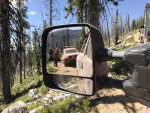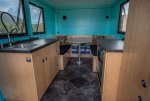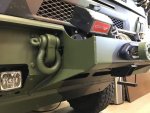I'm happy to go into my design but you should know there are quite a few ways to set this up.
In a classic two battery setup the simple way to do it is with a giant diode that charges the second battery(bank). There is large voltage drop so the second battery never fully charges so the smart VSR was designed to take care of that.
If you want to go to lithium of any form you need a system to control charging it because they don't like to be overcharged where lead acid does not really care. The battleborn and other drop in replacement batteries have internal smart chargers that do that for you. The tesla expects a BMS and charge controller to be connected. So a simple VSR won't work unless you put a charge controller in between.
I am going to separate my starting batteries from my house batteries completely. I don't intend on using the alternator to charge my house battery at all unless it's an emergency. Alternators are only 50% efficient and the truck already gets terrible MPG.
My house battery will be charged from solar with a MPTT inverter that generates nominal charge voltage for my pack. I most likely will be using a Victron Energy (VE) unit acts as an inverter (110 AC) and a charger for the pack. It can also take 110, 220 from the mains or a generator or both and charge the battery and generate house 110 AC.
https://www.victronenergy.com/inverters-chargers/quattro
From the batteries I get 48v DC which I run through a "DC disconnect" which can disconnect the load if the batteries get too low. That's how I will power my air conditioner and any other 48 v DC loads. It will also go to a 48 -> 12v DC inverter to generate 12v for house lighting and anything I can find that runs on DC. Step down transformation is very efficient (94-98%).
That fancy VE device makes regular old 110v AC which I can use for things like a microwave or laptop chargers. In addition I can buy a Noco or any other brand lead acid charger which I could configure in two ways.
1. 4 output Noco with one output per battery.
2. 1 24v DC output which I run to the pack as a whole.
I think I will opt for 24v option most likely. The pack does not wear level well because the inner batteries (close to the frame) only get used when starting the truck where as the outer ones are always used. (starting and 12v to accessories like lights and TCU). Charging the batteries individually is ideal.





